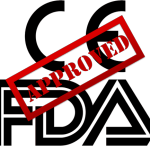The “regulatory affairs” section comprises over 200 tasks that need to be completed during the development and approval of medical devices.
Here, you will find an overview of the most essential content so that you can get your device approved quickly.
Content
On this page, you will find articles on the following topics:
- What regulatory affairs is
- Regulatory requirements
- Authorization and documentation
- Authorities, institutions, and associations
- Further topics of regulatory affairs
1. What regulatory affairs is
Regulatory affairs comprises the processes and activities that ensure that medical devices meet the regulatory requirements of the countries where they are sold. This includes
- obtaining the necessary approvals from the regulatory authorities,
- compliance with applicable regulations and standards, and
- maintaining conformity throughout the entire product life cycle until decommissioning.
The tasks of regulatory affairs also include monitoring changes to regulations and standards and communicating these changes to stakeholders within the company to ensure continuous compliance.
Regulatory affairs thus plays a crucial role in ensuring that medical devices are safe, effective, and comply with legal requirements.
Further information
Refer also to the article on regulatory affairs managers’ tasks, competencies, and earning potential. This includes the task of developing a regulatory strategy.
2. Regulatory requirements
a) Germany
| Laws |
Medical Devices Law (no longer valid)
Medical Devices Implementation Act MPDG |
| National regulations |
Medical Device Operator Ordinance (Medizinprodukte-Betreiberverordnung – MPBetreibV)
Medical Device User Notification and Information Ordinance (Medizinprodukte-Anwendermelde- und Informationsverordnung – MPAMIV) |
b) Europe
c) USA
d) Other markets
3. Approval and documentation
a) Approval
Find more information on international approval
b) Qualification and classification (How should my device be classified?)
c) Technical documentation (What do I need to document for each device?)
d) Quality management (What should your company fulfill?)
Quality management is not usually the responsibility of regulatory affairs. Nevertheless, we have listed some important articles for you.
e) Regulatory Roles
There are several expert articles on regulatory roles:
4. Authorities, institutions, and associations
a) Germany
b) Europe
c) International
| IMDRF: International Medical Device Regulators Forum |
5. Regulatory affairs: Further topics
The tasks of Regulatory Affairs also include finding and eliminating deviations and non-conformities. The (emergency) elimination is called remediation.
Note the advantages and disadvantages of Regulatory Information Management Systems (RIMS) and their role in manufacturers’ digital transformation.
Part of the tasks of regulatory affairs is regulatory intelligence.
Do you need support?
Do you still have questions, for example, about the approval of your devices? Then, take advantage of our free micro-consulting service.
If you would like support in developing and “approving” your medical devices in compliance with the law, contact us right away. The Johner Institute team will be happy to help!
A design change is a change in the design of a product. It is important to understand what regulatory implications arise from this and where there may be an impact on the validity of the product’s declaration of conformity. This article provides an overview and thus resolves many currently common misconceptions.
Details
The ISO 15189 standard “Medical laboratories – Requirements for quality and competence” specifies the requirements for a quality management system for medical laboratories. Laboratories are legally obliged to establish a QM system. According to ISO 15189, laboratories that operate in-house IVD medical devices require a QM system, which must be extended by additional chapters. This…
Details
Manufacturers of (most) class III medical devices have to undergo the Premarket Approval (PMA) procedure. That is one of the FDA’s most complex submission pathways, with a typical processing time of more than one year. The FDA usually approves only a few dozen PMA applications per year. This article presents the FDA’s requirements and tips…
Details
With the UDI system, the EU has introduced an obligation to identify and register medical devices that goes far beyond what is still required under the MDD. The Medical Device Regulation (MDR) even requires a UDI for standalone software. Read about what you need to prepare for here.
Details
This article tells you which regulatory requirements you must fulfill, how a vigilance system differs from a system for post-market surveillance, and how you can set up and operate a vigilance system quickly and in compliance with the law.
Manufacturers who wish to place medical devices on the market in the EU must comply with the European Medical Device Regulation MDR. This Regulation (EU) 2017/745 on Medical Devices, as it is officially titled, also imposes requirements on notified bodies, distributors, importers, and health institutions such as hospitals.
Details
In this article you will learn,
The DAkkS, the German Accreditation Body, is Germany’s national accreditation authority.
A declaration of interest is a formal document designed to make potential conflicts of interest transparent. Individuals submit a declaration of interest to demonstrate their objectivity and independence. This article is about declarations of interest in a clinical context.
Details
More and more medical devices are using artificial intelligence e.g., to diagnose patients more precisely and to treat them more effectively.

